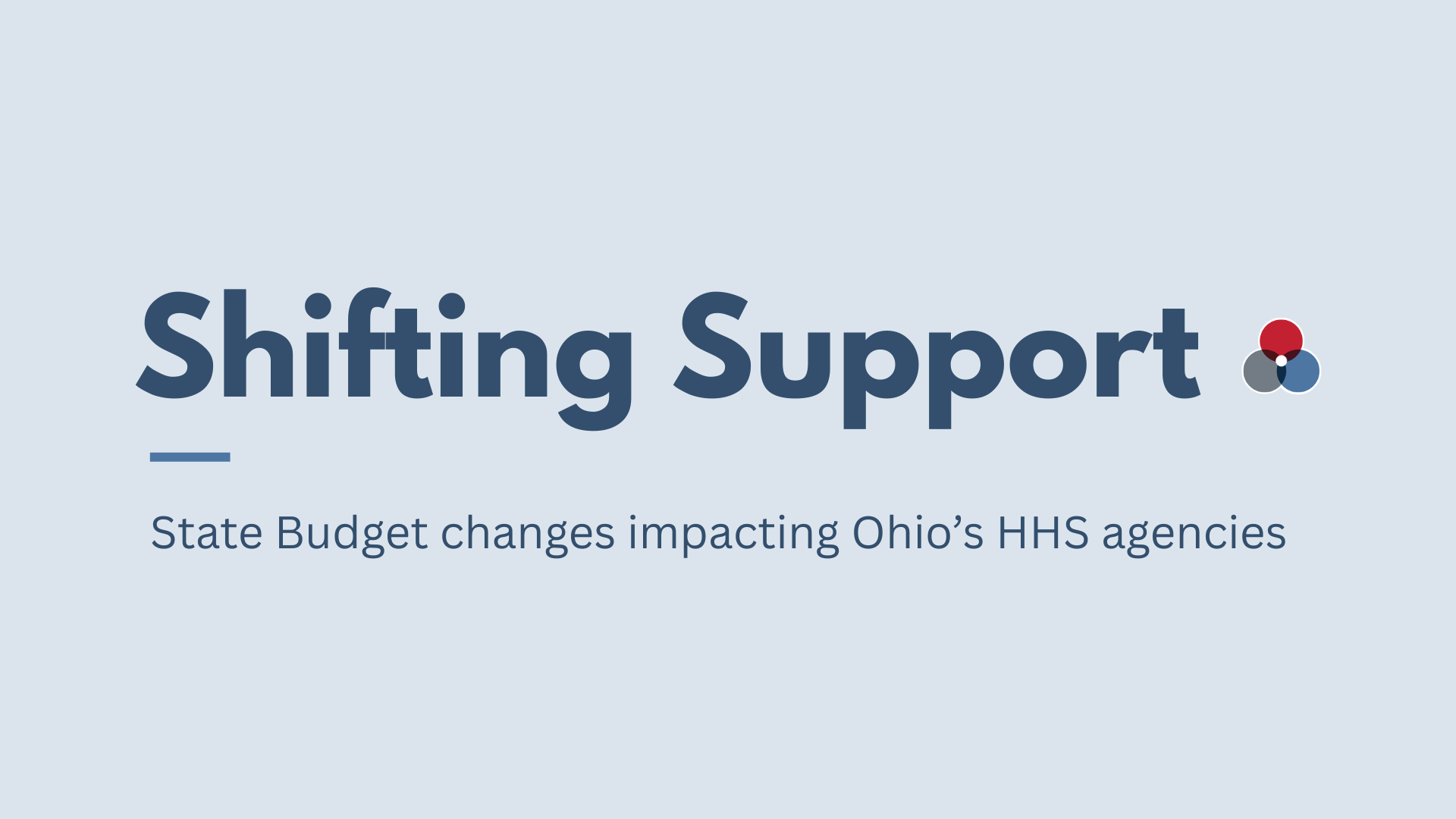By 2030, more than 3.3 million Ohioans will be 60 years of age or older. As we have stated in several publications, Ohio will see an aging trend in the coming years. As the state ages, the support systems necessary for older adults to maintain a high quality of life will become even more important for both community and economic development purposes. The pandemic has disproportionately impacted older adults across the country and has highlighted the urgency to ensure that organizations and systems are resilient in order to meet the needs of the aging population both during and post-pandemic. In this State Budgeting Matters, we examine the FY2022-FY2023 budget from the State of Ohio Department on Aging (ODA), the lead agency serving older adults across the state of Ohio, in addition to other line items in the state budget that affect older adults.
By 2030, more than 3.3 million Ohioans will be 60 years of age or older.
State of Ohio Department on Aging Agency Overview
The ODA is the state convener of aging services across the state. They work closely with the 12 regional Area Agencies on Aging, spread throughout the state, which helps to fund service providers for older adults through both federal and state dollars. ODA is also responsible for overseeing the PASSPORT program, the Program of All-Inclusive Care for the Elderly (PACE) program, the Long-Term Care Ombudsman, and other programs that strengthen the long-term care continuum. Often these programs are supported through a mix of federal and state dollars.
In the ODA budget, the agency will be receiving approximately $104 million in FY2022 and $100 million in FY2023. Of those totals, approximately 20 percent will be funded by the General Revenue Fund.
For some programs, such as the line item supporting the Long-Term Care Ombudsman (490410), the Greenbook describes this line item as seeing a 53.81 percent increase in FY2022. When in reality, the funding was restored back to the FY2021 proposed allocation in the last biennial budget. Line items such as this one saw a decrease due to COVID-19 budget cuts. The FY2022-FY2023 budget restores funding back to the full amount from two years ago. The Center for Community Solutions examined this in our Bluebook analysis earlier this year.
More than 20 percent increase for Long-Term Care Ombudsman program
The Long-Term Care Ombudsman did see a slight increase in its total overall funding, with an increase in line item 490609 from $772,140 up to $1,000,000 per year for operating costs of the regional Long-Term Care Ombudsman offices. Additionally, Ombudsman Support (line item 490620) saw an increase from $103,547 in FY2021 up to $1,532,273 in FY2022 and $1,532,919 in FY2023.
Senior Community Services Block Grant restored to pre-COVID levels
Other line items, such as the Senior Community Services Block grant (490411), also saw their funding levels restored to pre-COVID funding levels. However, the line item did see an increase from the executive recommended budgeted amount of $8.7 million, up to $9.7 million in the final enacted budget. The $1 million increase that was borne out of the conference committee process, will go to the area agencies on aging that will use those dollars for senior services to respond to the needs of seniors during the pandemic. $75,000 a year is also earmarked for the Neighborhood Alliance Senior Nutrition Program.
New At-Home Technology Pilot Program will better connect older adults in their homes
The pandemic has brought about a very different way for service providers to bring supportive services to Ohio’s residents. Specifically, the utilization of the internet at home has increased awareness of the importance of digital literacy and closing the digital divide. To that end, ODA is creating an At Home Technology Pilot Program (490613) for $250,000 annually, to award grants to providers who use remote technologies to support older adults in their homes or residential-based facilities.
Research and comparison of residential and care facilities simplified with the Long-Term Care Consumers Guide
One of the largest increases in funding was for the Long-Term Care Consumers Guide (490613), an online resource that seeks to serve as an informational resource for Ohioans who are researching and comparing residential care facilities, nursing homes, and home and community-based services. The line item went from $52,805 in FY2021 to $401,640 in FY2022 and $1,427,072 in FY2023.
Adult Protective Services gains more than $1.5 million in 2022-23 budget
Although not located in the Ohio Department of Aging budget, the Adult Protective Services line (600534) did see an increase from the executive’s recommended budget to the final version, increasing from $4.2 million to $5.72 million. When spread throughout Ohio’s 88 counties, the funding will provide over $65,000 to each county—enough to add at least one Adult Protective Services employee.
State Action Plan on Aging still unclear
ODA also released the State Action Plan on Aging (SAPA) earlier this year. It is not clear what funding mechanisms will be put into place to assist the execution of the SAPA.
A line item of $9 million and $11 million that would examine changes to nursing homes, was taken out in the House and Senate versions.
Although it was included in the recommended executive budget, a line item of $9 million and $11 million that would examine changes to nursing homes, was taken out in the House and Senate versions. https://aging.ohio.gov/wps/portal/gov/aging/about-us/reports-and-data/2020-2022-strategic-action-plan-on-aging-sapa
With only modest federal funding, state-level support for Ohio aging populations needs improvement
In its totality, the Ohio Department of Aging budget makes modest increases in funding of some line items. However, many of its increases in funding are due to increases in federal funding. Unfortunately, the State of Ohio seems to have missed an opportunity to further invest state dollars, especially at a time where older adults were disproportionately impacted by the pandemic. A drastic increase in state GRF dollars would be catalytic and would greatly enhance efforts to fight food insecurity, social isolation, and behavioral health, as well as finding ways to increase confidence for Ohioans that if they have a loved one in a residential facility, that they will have the highest quality of care. It is true that there are more federal dollars that are coming into the state for older adults, but it must be the position of lawmakers and advocates that these dollars supplement, not supplant existing state GRF dollars.
The Department of Aging should continue to be a high priority of the DeWine administration especially as they seek to enhance the quality of life for older adults during the pandemic.
Looking forward
Moving forward, the Department of Aging under the leadership of Ursel McElroy should continue to be a high priority of the DeWine administration especially as they seek to enhance the quality of life for older adults during the pandemic. The Center for Community Solutions is committed to ensuring that Ohio’s older adults remain a policy priority well into the future.








